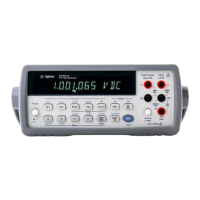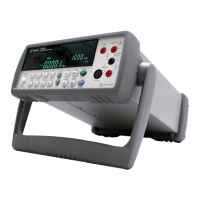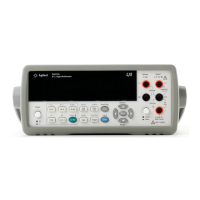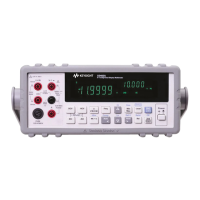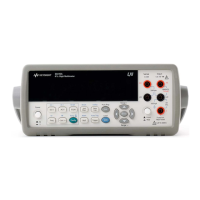Ranging
You can let the meter automatically select the range using autoranging
or you can select a fixed range using manual ranging. Autoranging is
convenient because the meter automatically selects the appropriate
range for each measurement. However, you can use manual ranging for
faster measurements since the meter does not have to determine which
range to use for each measurement.
• The selected mode (auto or manual range) is stored in volatile
memory; the meter returns to autoranging when power has been off or
after a remote interface reset.
• Autorange thresholds:
Down range at <10% of range
Up range at >120% of range
• If the input signal is greater than the present range can measure, the
meter gives an overload indication: “OVLD” from the front panel or
“9.90000000E+37” from the remote interface.
• For ratio and difference measurements, the specified range is
independent for both Channel 1 and Channel 2.
^ v Auto/ Man • Front Panel operation: Press a front-panel RANGE key to set
manual ranging and to up or down range. Press the Auto/Man key to
return to autoranging. See also “To Select a Range,” on page 42.
• Remote operation: Range is set with parameters in the MEASure
and CONFigure subsystems. For example:
CONF:VOLT:DC 10.0
Sets the 10 Volt DC range
Range can be set directly with the SENSe subsystem. For example:
SENS:VOLT:DC:RANGe 0.001
SENS:RES:RANGE:AUTO
Sets the 1 mV DC range
Sets auto ranging on
2-wire resistance
measurements
Chapter 3 Features and Functions
General Measurement Configuration
64
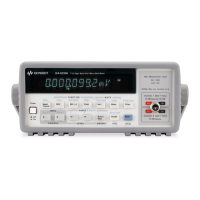
